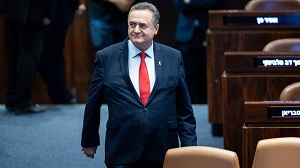Capital expenditure: A small detail with a big impact - By Raad Mahmoud Al-Tal, The Jordan Times
In economic debates, capital expenditure is often highlighted as one of the most important tools for public and private investment. It is not simply a number in the budget. It reflects a strategic view of how to build assets and strengthen the productive capacity of the economy. This topic becomes even more important as the House of Representatives prepares to discuss the 2026 General Budget Law. Current expenditures amount to about 11.455 billion dinars, while capital expenditures stand at 1.600 billion dinars.
Capital expenditure is linked to the government’s or an institution’s ability to create new assets or upgrade existing ones. It represents long-term investment that improves productive efficiency and raises the quality of public services. When a new road is constructed, a power plant is expanded, or a public hospital is built, the benefits go beyond immediate needs. These projects strengthen the economic structure and improve the economy’s capacity for growth. For this reason, capital expenditure is defined as spending that adds a new asset, increases the productive capacity of an existing one, or significantly extends its useful life.
In contrast, many activities aim only to maintain an asset in its normal condition. These include routine maintenance, general repairs, replacing worn-out parts, or fixing minor operational issues. Such activities are classified as current expenditures because they do not create new productive capacity. They only preserve the asset as it is.
However, maintenance becomes capital expenditure when it goes beyond simple repairs. If the work significantly enhances the asset, increases its output, extends its useful life for several years, or improves its quality beyond the original state, it is considered capital expenditure. Examples include upgrading the systems of a power station to raise its output, or rehabilitating a school in a way that makes it function like a new facility.
Current expenditure, on the other hand, refers to the spending required for daily operations. It includes salaries, supplies, basic services, and other operational costs. This spending is essential but short-lived. It ends once the money is spent and does not build new assets or increase productive capacity. When current expenditure dominates the budget, it means most resources are directed toward operations rather than investment.
The basic rule for classification is simple. Spending that keeps an asset as it is counts as current expenditure. Spending that improves the asset or extends its productive life counts as capital expenditure. This distinction is not only technical. It has a direct impact on fiscal policy and the ability of the state to implement development projects that support real economic growth.
The level of capital expenditure in a budget reflects the government’s commitment to developing infrastructure, improving services, and raising productivity. The level of current expenditure reflects operational obligations that limit the space available for investment.
Understanding these differences, including the distinction between operational and capital maintenance, helps evaluate government priorities and assess the impact of spending on development and economic activity.
Capital expenditure is an investment in the future. It strengthens productive capacity, increases the value of assets, and supports a more dynamic and resilient economy. Current expenditure keeps daily operations running. By understanding the difference especially in light of the actual budget figures we can better assess how committed the government is to real investment that builds a strong economy capable of facing challenges and creating jobs.
Raad Mahmoud Al-Tal – Department of Economics – The University of Jordan
Latest News
-
 ‘Israel’ vows “no calm” in Lebanon
‘Israel’ vows “no calm” in Lebanon
-
 Safadi, German counterpart discuss bilateral relations, regional developments
Safadi, German counterpart discuss bilateral relations, regional developments
-
 Unstable weather brings rain, fog across Jordan on Tuesday
Unstable weather brings rain, fog across Jordan on Tuesday
-
 Ukraine, Russia trade deadly strikes as negotiators hammer at deal
Ukraine, Russia trade deadly strikes as negotiators hammer at deal
- UN seeks 'impartial' probe into Israeli strikes in Lebanon